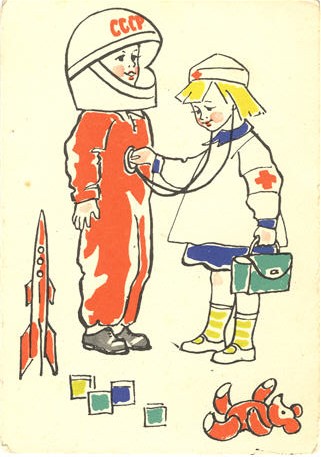ExhibitionPicturing the Gender of Nursing: Playing Doctors and Nurses
Popular games, toys, and stories promoted the idea that boys will be doctors or soldiers and girls will be nurses. In movies popular stars played nurses as self-sacrificing angels and doctors’ handmaidens. Television programs, such as Star Trek, continued to promote nursing as women’s work until the 1960s.
- 0 of 0
- ForwardForward
- BackBack
- EnlargeENLARGE IMAGE
- AudioPLAY AUDIO
- DocumentREAD TRANSCRIPT
- FolderFolder
- CarouselSEE RELATED IMAGES
- Digital GalleryVIEW IN DIGITAL GALLERY
- VideoVideo
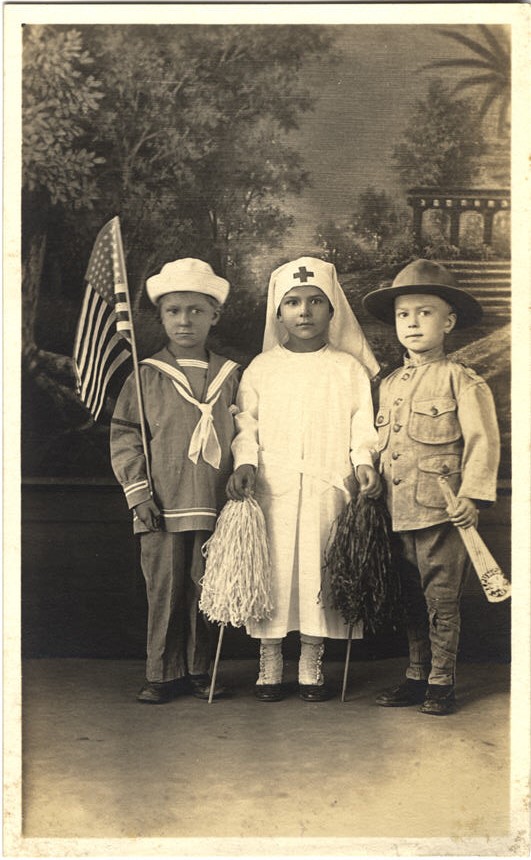
Little Patriots, United States, ca. 1917
Early 20th century photographic portraits of children in the United States and Europe frequently depicted girls dressed up as nurses and boys as soldiers or doctors.
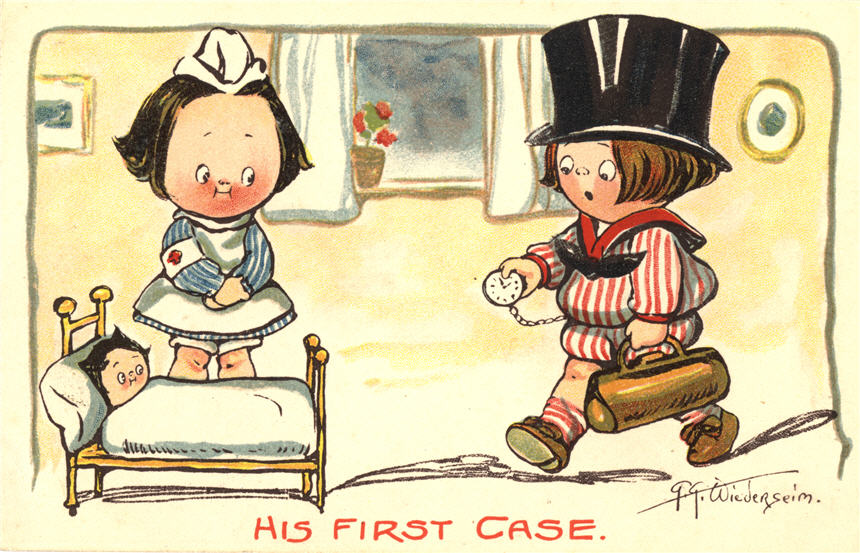
His First Case, ca. 1910
Created by Grace G. Wiederseim (1877—1936)
Produced by Alfred Schweizer Fine Art Publisher
American illustrator Grace Wiederseim is best remembered for creating the Campbell Kids advertising campaign during the early 1900s. This cartoon, of a boy doctor attending to a sick doll while a girl nurse looks on, is typical of Wiederseim’s style at the time.
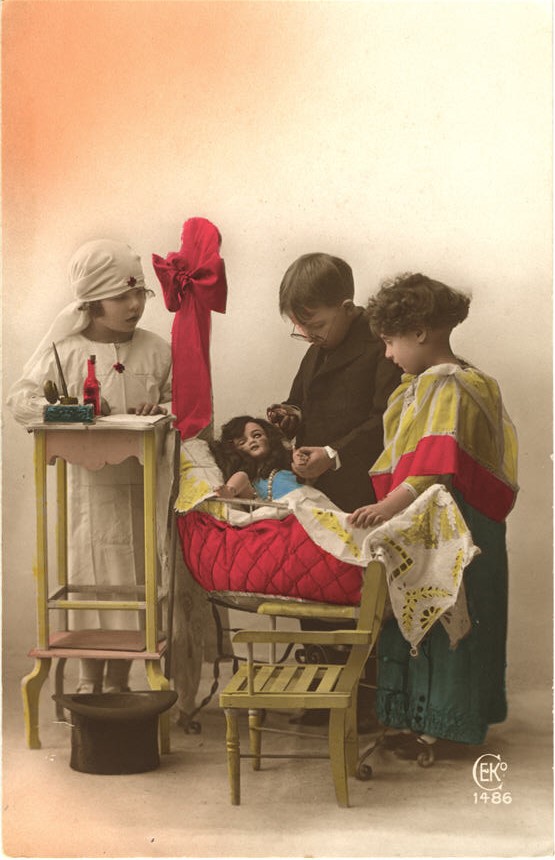
Children playing doctor and nurse, France, ca. 1928
The French were experts in hand-tinted studio postcards, which were individually painted with watercolor to create special effects. The rose-tinted background offsets a sentimental image of childhood, the white clad nurse and colorful mother frame the somberly dressed boy doctor at the center of the picture.
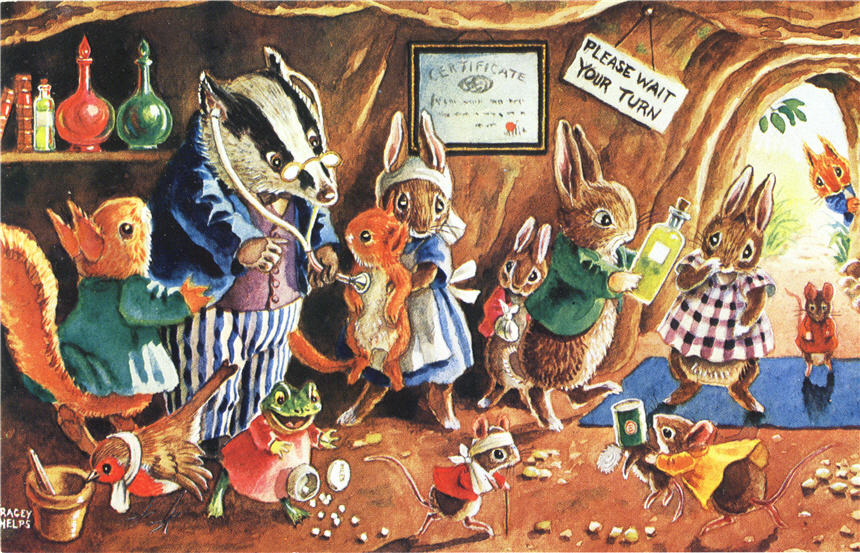
A Visit to the Doctor, 1960s
Created by Angus Clifford Racey Helps (1913–1971)
Produced by The Medici Society Ltd., England
Racey Helps was an English illustrator who specialized in animals. In this medical scene, traditional gender roles are reinforced. The dominant animal, a badger, is shown as a male doctor and a much smaller creature, a rabbit, is a female nurse.
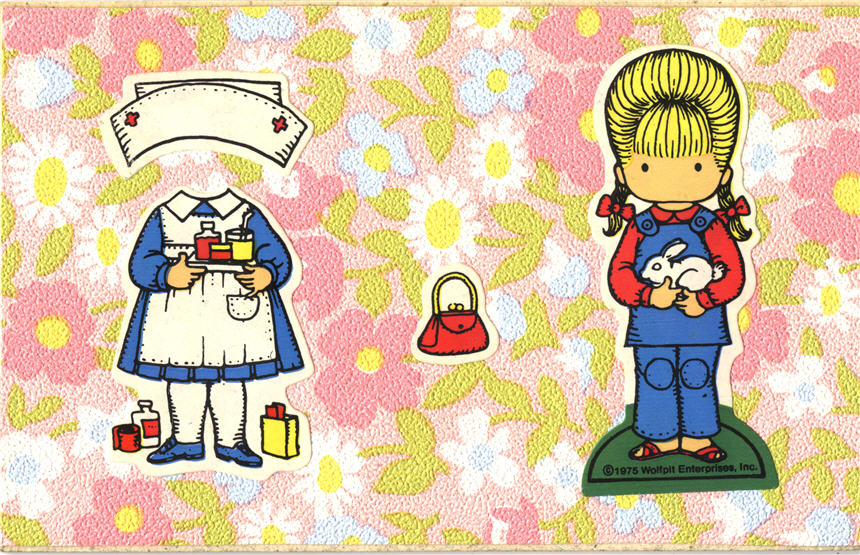
A children’s paper cut out game featuring a nursing uniform for a girl, 1975
Produced by Littlehouse Publishing
Toys and magazine advertisements persisted in depicting nursing as a career for girls until as late as the 1970s. One of the earliest cut out paper doll figures, created by Grace Wiederseim, dates from the 1900s.
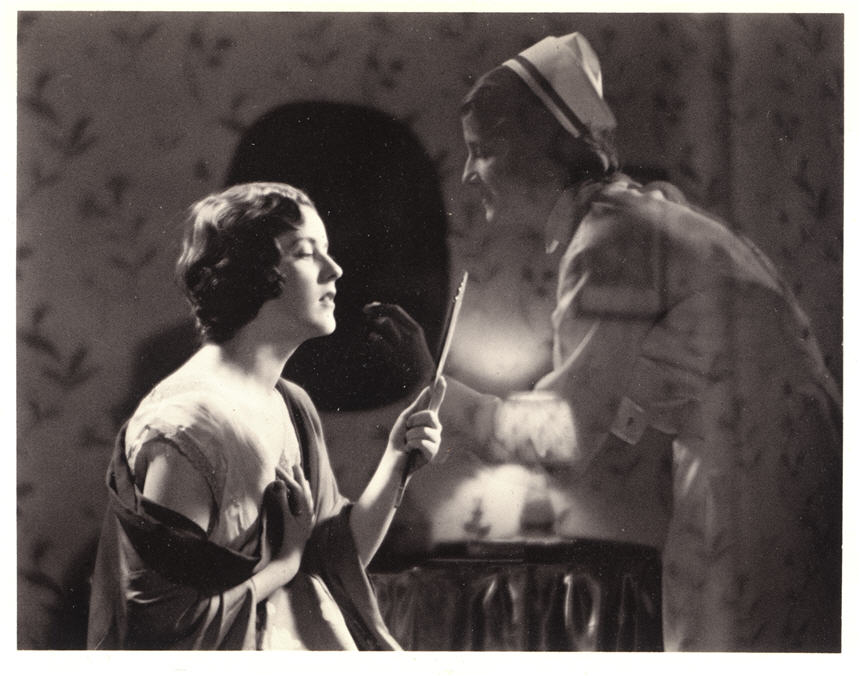
Daydreaming of becoming a nurse, 1929
Produced by Fotofolio Publishing, New York
A woman looks into the mirror and sees herself as a nurse. From the 1920s—1960s, nursing figures in romantic novels, films, and career girl stories as a vocational service to a higher ideal, a way of life that promises emotional and spiritual fulfillment as well as economic independence.
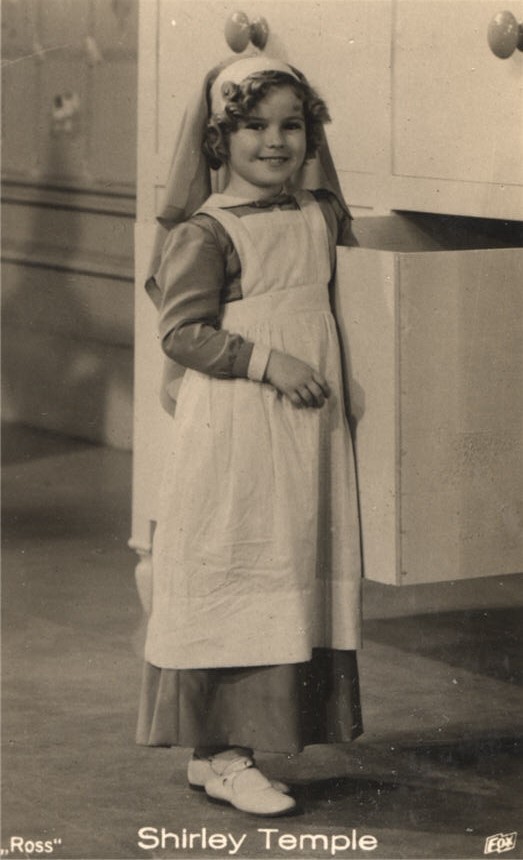
Young actress Shirley Temple wearing a nurse costume, ca. 1935
Produced by Fox Studios, United States
Shirley Temple was America’s most popular child star in the 1930s, appearing in over 40 films. Here, she poses for the camera dressed as a nurse.
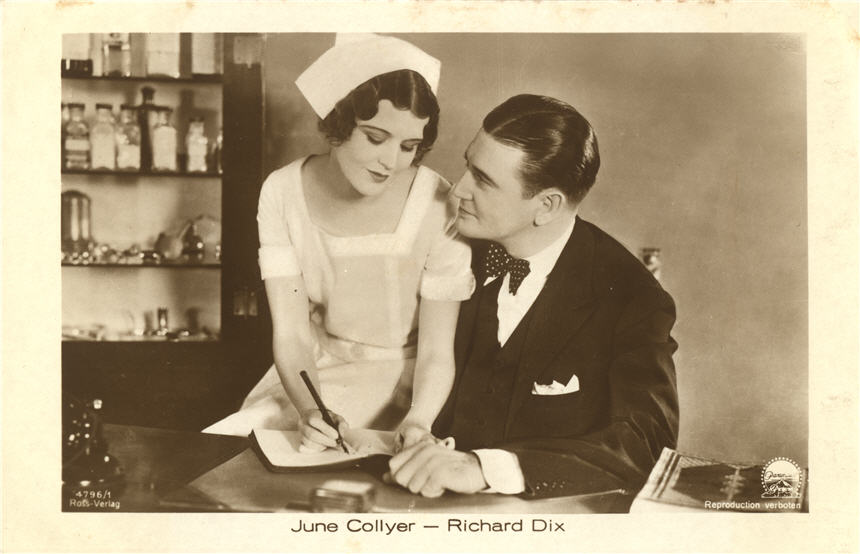
June Collyer, who plays a nurse, with Richard Dix, who plays a doctor, in The Love Doctor, 1929
Produced by Ross-Verlag Publishing, Berlin
A German postcard advertises an American nurse and doctor comedy-romance movie. June Collyer plays a nurse working for a modern doctor (Richard Dix) who sets himself up as an expert in romantic relationships only to find that he has fallen hopelessly in love with his nurse.
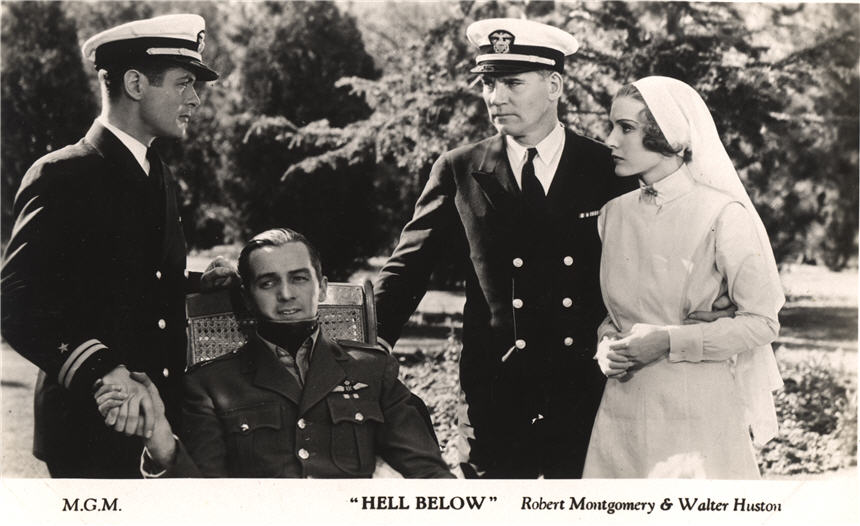
Madge Evans in Hell Below, 1933
Produced by Film Weekly Publishing, United States
In this still from a romantic drama set in wartime, Madge Evans plays nurse Jean Standish, and 1930s heartthrob Robert Montgomery plays the lieutenant who falls in love with her.
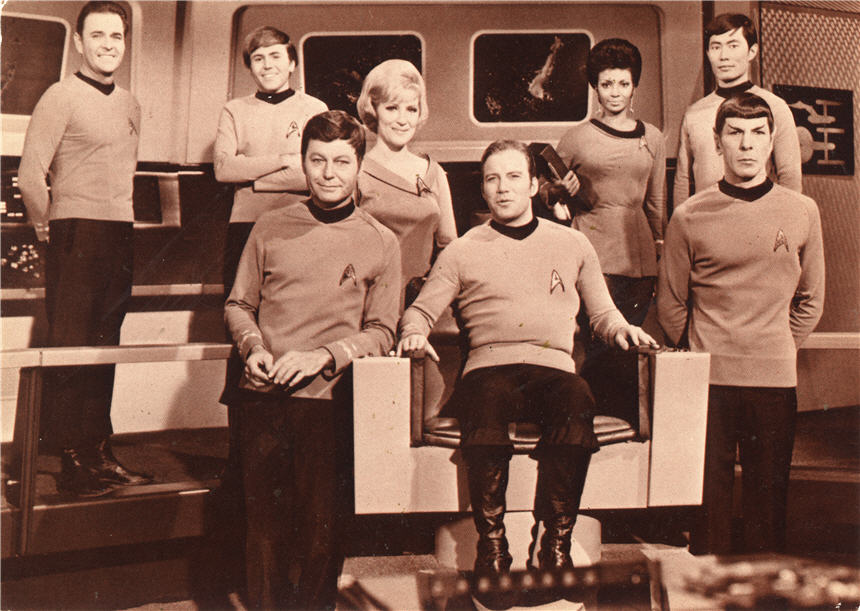
Star Trek; Nurse Christine Chapel (Majel Barrett Roddenberry) is fourth from the left, 1966—69
Produced by Ludlow Sales Publishing, New York
The original Star Trek series aired on NBC for three seasons. Majel Barrett Roddenberry played Nurse Christine Chapel (fourth from the left). By the end of the ship’s five-year mission, Chapel was training to be a doctor, playing out a perceived hierarchy of value between the two professions.
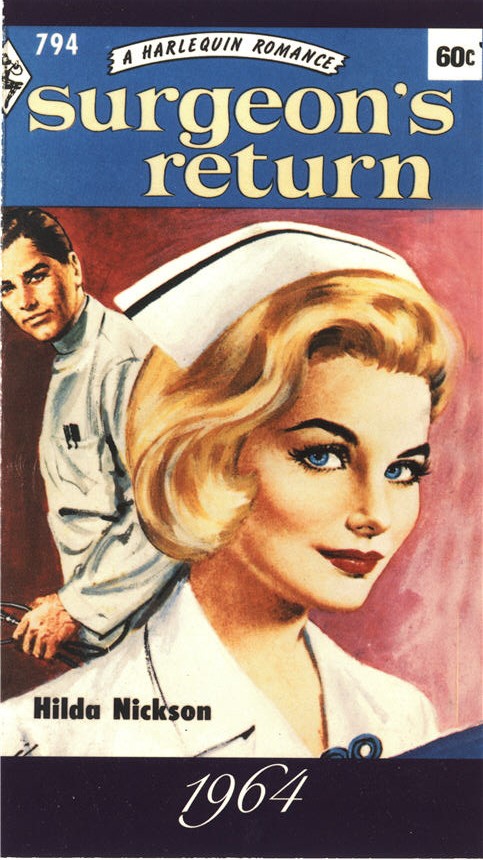
A postcard reproduction of the cover of the Harlequin romance Surgeon’s Return, which features a nurse, 1999
Produced by Harlequin Enterprises Ltd.
Following the success of medical dramas such as Dr. Kildare (NBC 1961—66) on television, doctor and nurse romance novels became best sellers, feeding romantic fantasies about nursing work.



